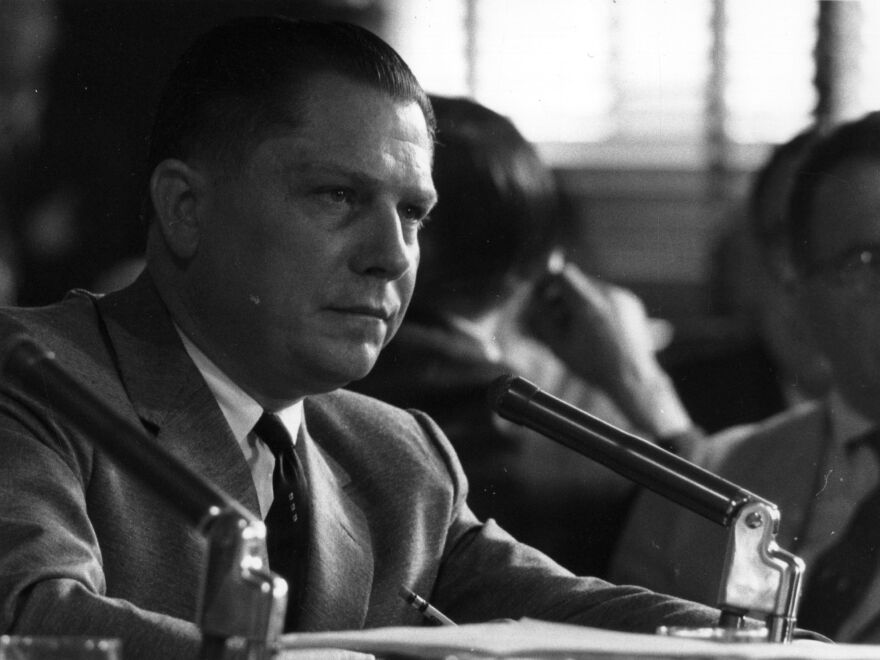The enigmatic disappearance of American labor leader Jimmy Hoffa nearly five decades ago continues to captivate the public imagination, cementing his status as one of the 20th century’s most enduring unsolved mysteries. On July 30, 1975, the former Teamsters president vanished without a trace, leaving behind a legacy intertwined with power, organized crime, and an unresolved question that has spurred countless theories and cultural references.
Born James Riddle Hoffa, “Jimmy” became a colossal figure in the rough-and-tumble world of union organizing, known for his relentless advocacy for workers’ rights, fair wages, and robust benefits. His leadership saw the International Brotherhood of Teamsters grow into one of the nation’s most formidable labor unions, establishing him as a powerful force in American society, often operating at the intersection of legitimate labor activism and controversial associations.
Hoffa’s career was marked by highly publicized confrontations, most notably with a young Robert F. Kennedy during Senate Labor Committee hearings in the late 1950s. These televised clashes intensified a bitter rivalry, which continued when Kennedy, as Attorney General under his brother President John F. Kennedy, relentlessly pursued Hoffa through the legal system, aiming to dismantle his power base within the Teamsters.
Eventually, these investigations culminated in Hoffa’s conviction for jury tampering and mail fraud in 1964, leading to a federal prison sentence he began serving in 1967. After more than four years behind bars, President Richard Nixon commuted his sentence in 1971, albeit with a strict condition: Hoffa was barred from participating in union activities, a stipulation he immediately sought to challenge upon his release, determined to reclaim his former authority.
It was this persistent drive to regain leadership that set the stage for the fateful day of his disappearance. On July 30, 1975, Hoffa was scheduled for an afternoon meeting at the Macchus Red Fox restaurant in Bloomfield Township, Michigan, believed to be with two figures connected to organized crime. He was last seen outside the restaurant, and then, he was gone, triggering one of the most extensive missing person investigations in U.S. history.
The immediate aftermath of Hoffa’s vanishing birthed an array of macabre and sensational theories that quickly permeated American pop culture. Speculation ranged from his burial under a Detroit freeway to the widely popularized, yet unsubstantiated, claim that his body lay beneath the end-zone of Giants Stadium in New Jersey, all indicative of the public’s fascination with his ties to the mob and the ultimate mystery surrounding his fate.
Despite decades of intensive searches, forensic investigations, and the legal declaration of his death by a Michigan probate court in 1982, no definitive evidence of Hoffa’s remains has ever been found. Officially, the Detroit branch of the FBI maintains the case remains open, underscoring the enduring nature of the investigation and the determination to bring closure to this historical enigma.
Beyond the sensationalism of his disappearance, Hoffa’s substantial impact on the labor movement continues to be recognized. The International Brotherhood of Teamsters periodically issues statements acknowledging his controversial yet significant legacy in advocating for working-class Americans, emphasizing his vision for sustainable employment and fair wages as foundational principles of unionism, and urging remembrance of his contributions rather than just the tragic end.
Thus, fifty years on, the name Jimmy Hoffa conjures not only the image of a vanished man but also an indelible icon whose story spans American labor history, political power struggles, and the shadowy world of organized crime. His unsolved disappearance ensures his legend endures, perpetually fueling public intrigue and reinforcing his unique, almost mythical, place in the annals of American lore.






Leave a Reply